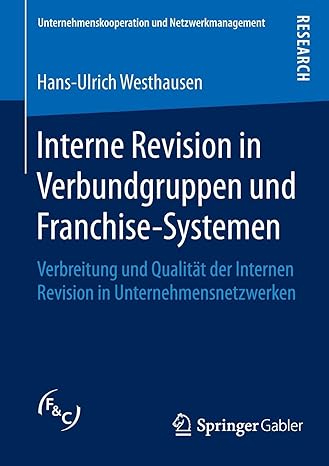Question
Each year, Coach spends about $5 million on research. The company conducts personal interviews with more than 10,000 consumers. It supplements this research with a
Each year, Coach spends about $5 million on research. The company conducts personal interviews with more than 10,000 consumers. It supplements this research with a variety of other techniques, including focus groups, e-mails, and online surveys. Questions range from Coachs brand image to the strap length on its bags; Coach gathers data about fashion collections already in stores as well as items that are in the planning stages. As Peter Emmerson, president of global business development at Coach, explains, when the company entered Japan research provided managers with an understanding of the need for a window in the bag that could hold a train pass. Likewise, bags designed for the Japanese market had to be scaled down in size. The typical Japanese consumer likes smaller, cute things, and the American tends to like bigger sizes with lots of compartments, Emmerson says.
The value of Coachs research effort was underscored when Coach executives discovered that the companys cosmetics cases were enjoying surprisingly strong sales. It turned out that women were putting the smaller cases inside the larger Coach bag so they could find cell phones and other important items without rummaging. Management understood that the unexpected success of the cosmetics case represented an opportunity to innovate; as David Duplantis, vice president of retail merchandising, put it, We recognized an opportunity to accessorize the accessory. The design team created a 4-inch by 6-inch zippered bag with a wrist strap and a clip. Called a wristlet, the new bag is a bracelet-wallet hybrid for the wrist.
In 2003, Coach opened a small boutique inside the Harvey Nichols department store in Londons fashionable Knightsbridge area. Emmerson hopes that, after gaining a foothold in Great Britain, the Coach brand will gain popularity as tourists from France, Germany, and Italy return home with their bags. Says Emmerson, The UK will give us some sense as to what the opportunity size in Europe might be.
CEO Frankfort is also increasing Coachs presence in China. In an effort to exert more control, Frankfort acquired Imaginex Group, which was Coachs third-party distributor there. Coach currently has 30 stores in China; Frankforts plan calls for 50 new locations.
According to company research, Coach has a 3 percent market share and 4 percent brand awareness in China. By contrast, Louis Vuittons market share is more than 30 percent. Coachs primary target in China consists of university-educated professional women in the emerging middle class whose annual earnings are increasing substantially. These women are also buying plasma TVs and laptop computers. One day, Frankfort predicts, China will be a bigger market than Japan for Coach. If we are able to replicate what we did in Japan, the business will double in the next 4 or 5 years.
Meanwhile, Frankforts management team faced the difficult decision of how to adapt to the global recession. Jerry Stritzke, Coachs chief financial officer, argued that Coach had become too expensive. A decision was made to realign the product assortment so that 50 percent of Coachs bags are priced below $300. In making his case, Stritzke convinced Frankfort that the company would generate sufficient unit volume increases to offset the dollars lost from lower price points.
The team settled on an approach: They would develop a new line that would generate youthful energy for the brand. Although some industry observers might argue that it is misguided to offer recession stressed consumers something fun, Krakoff believes otherwise. People are not buying safe. Its a mistake to think so. People want to be inspired. Thats what fashion is about; thats what shopping is about, he said.
Krakoffs staff set to work developing a new line of fabric and leather bags that are thinner, softer, and lighter than the companys usual offerings. To keep costs down, Coach worked closely with leather processors and other supply-chain members. In the spring of 2009, the six-bag collection, dubbed Poppy, was previewed for small groups of women in Coachs Manhattan showroom. Encouraged by the positive response, the team test marketed the new line in several Coach stores and department stores. In the test, two bags priced at $198the Groovy and the Glamexceeded managements expectations.
As the June 26 retail launch date approached, visitors to Coachs Web site could click on a Poppy link. Those who did were taken to a page that invited them to register for first dibs on the most popular styles and Poppy prizes that included a $1,000 shopping spree. They also were instructed to Grab your friends and get on the guest list for a Poppy Party in Short Hills, New Jersey, Chicago, or San Francisco. The marketing team also harnessed the power of social media to build buzz: The companys Facebook pages included a Highlights from the New Poppy Collection photo album, Poppy Party RSVP links, and comments from shoppers who were bubbling over with enthusiasm for the new line. Coachs registered Facebook fans209,000 and countingalso had the opportunity to buy Poppy bags in an exclusive online presale event.
Discussion Question? Give a brief introduction of this paragraph? Give a brief conclusion ?
Step by Step Solution
There are 3 Steps involved in it
Step: 1

Get Instant Access to Expert-Tailored Solutions
See step-by-step solutions with expert insights and AI powered tools for academic success
Step: 2

Step: 3

Ace Your Homework with AI
Get the answers you need in no time with our AI-driven, step-by-step assistance
Get Started


